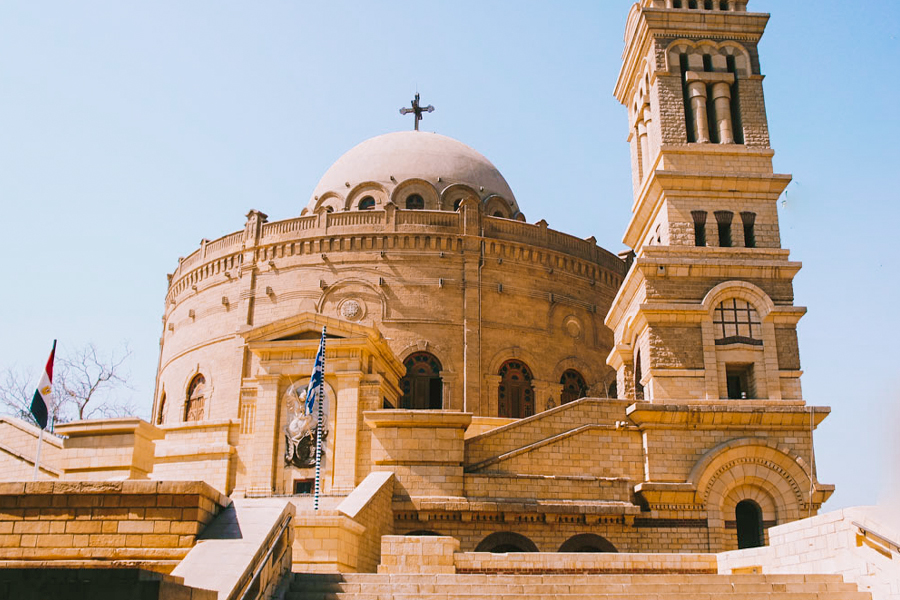Coptic Cairo
Coptic Cairo is a small area with a lot of Christian buildings on it, like the Jewish synagogue of Ben Ezra, the remains of an ancient fort called Babylon, the famous Hanging Church, and a unique Coptic museum about a culture that is almost extinct.
Meaning of the word Copt
Some people used the spellings “Gopt” and “Kopto” instead of “Kopt” and “Gibt.” After the Arabs took over, the Christians of the Nile Valley were called “Christians of the Nile Valley.” Hu-ka-Ptah, which means “Temple of the Bird,” was one of the names that the pharaohs gave to Memphis, Egypt’s old capital. This hieroglyphic phrase is where the Greek word “Egypt” comes from. During the first few hundred years of the Christian era, Egyptians spoke a language called Coptic, which is the same as modern Egyptian.
Fortress Babylon
In the past, a Christian community with at least 42 churches thrived on an area of about 60 acres. Now, that Christian community is kept inside the “walls” of Babylon, an ancient Roman fortification. You can visit the Coptic Museum and a few churches, monasteries, and other places of worship.
Diodorus Siculus, a historian, says that the name “Babylon” for this area came from Babylonian war prisoners who were sent here during the time of the Pharaohs. The Persians first defended the buildings, but during Roman times, they got a lot of improvements.
In the 100th year of our time, the Roman Emperor Troyan had a fort built there to house the army he had sent there. The square fort was about 200 by 400 metres when it was first built. The walls of the fort were about 11 metres high and about 3 metres thick. At the turn of the last century, most of the walls of Babylon were still standing, but now there are only small pieces left.
Coptic churches of Fortress Babylon:
All four of Egypt’s oldest Coptic churches—Abu Serga, El Muallaka (also called the Hanging Church), the Church of St. Barbara, and the Church of El Adra (also called the Church of the Blessed Virgin and Saint George)—are inside the walls of the former Roman citadel of Babylon.
Old Coptic churches didn’t have many public entrances, and they often looked the same as the homes around them. The entrance to the church was sometimes blocked by a wall, and the only way in or out was through a narrow side door. The Holy Family hid in the crypt, which was to the left of the sanctuary. The cave under the central apse of the choir was turned into a chapel with three aisles and an altar built into the wall (niche).
Abu Sergius’s Church:
Abu Sergius is one of the first Christian places in the city. It is one of the places in Egypt where Christians think the Holy Family lived. This cathedral was built to honour Sergius and Bakus, two Roman soldiers who died in Syria during the reign of Emperor Maximian. The Holy Family is said to have hidden in this cave on their way to Egypt, and the oldest part of the building dates back to the 5th century.
During the Fatimids’ rule, part of this church was fixed up after it had been burned down in the 8th century. The church is 27 metres long, 17 metres wide, and 15 metres tall. It was built with the standard basilica layout in mind. The church can be reached through a quiet side door. Even though the church of St. Sergius has been fixed up more than once, it is still seen as a model for the oldest churches where Copts worshipped.
Santa Barbara Church:
One of Egypt’s largest and most beautiful churches is St. Barbara’s. It was written to honour a young woman from Nicodemia in Asia Minor whose father killed her because she was a Christian. In the fourth century, when it was dedicated to Saints Cyrus and John, the church got its start. In 684, a wealthy scribe fixed up the church. In 750, it burned down in the Great Fire of Fustat. The church was then rebuilt in the 11th century. Later, a new sanctuary was built in the church to hold St. Barbara’s remains. The heart of the church is a place that is holy to Saint Barbara. The building to the left of the sanctuary is a shrine that honours two martyrs and holds their bodies.
Church of St. George:
You are in a Greek Orthodox church. The main church and the monastery are both part of a large complex that the main church looks out over. The walls of the old Roman fortress can be seen to the left and right of the winding stairs. On the northern wall, you can see the huge and beautiful church.
Hanging Church of al-Mualaka:
Because this church is in an area with a lot of people, it has problems with air pollution, high water tables, high humidity, and water leaks from a 100-year-old sewage system that is no longer used and doesn’t work. The wooden ceiling decorations were blackened by smoke, and the walls and foundations of the church were destroyed by an earthquake in 1992. In the end, it took 16 years to fix up, but the public can now visit it.
The Ben Ezra Synagogue:
Egypt’s Jews live in Old Cairo, and the Jewish people who live there are sure that their synagogue dates back to Moses. Most historical records agree that the old Ben Ezra synagogue was turned into a Christian church in the fifth century. It stayed that way until the ninth century, when the Jewish community paid 20,000 dinars (Coptic debts) to rent the land and build a new synagogue there. Most of the synagogue’s decorations, on the other hand, were made in the 12th century.


0 Comment